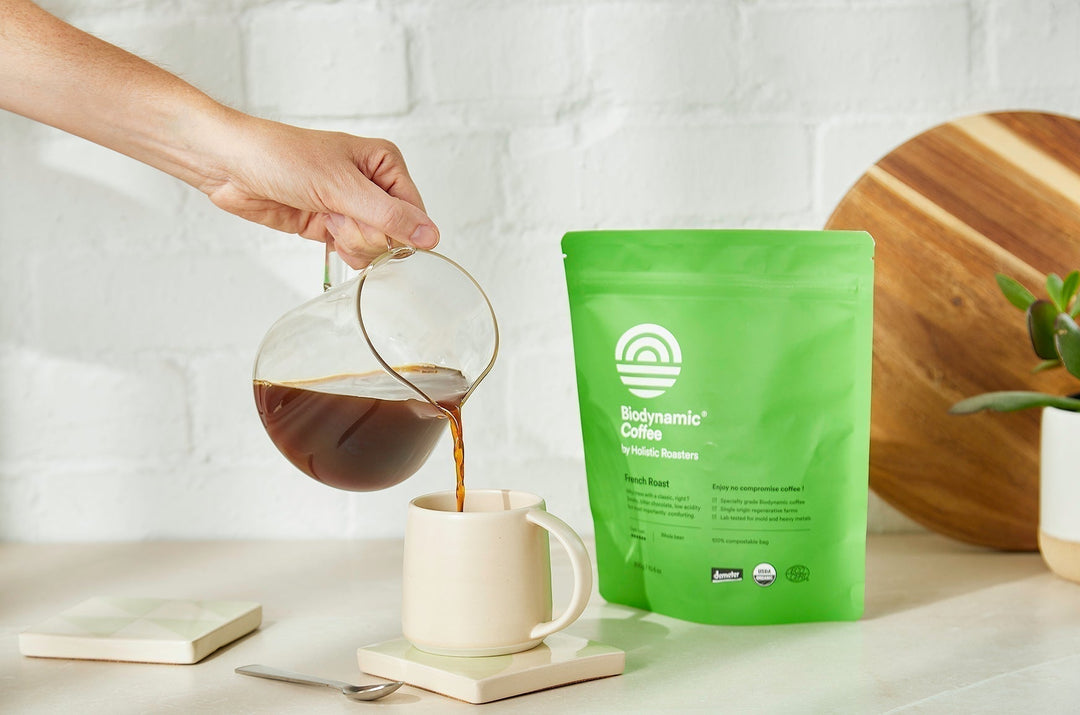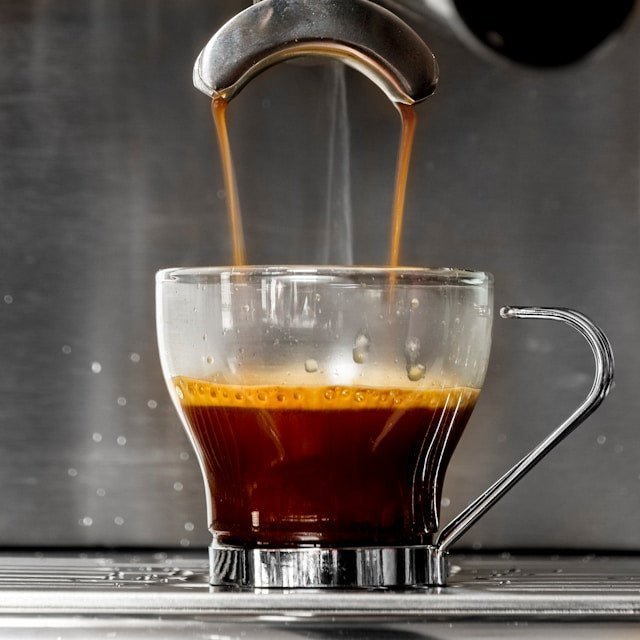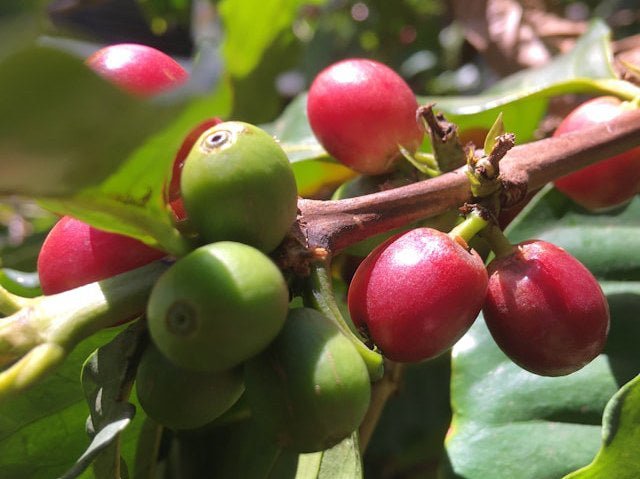Everything You Wanted to Know About Grinding Coffee (And More!)
Finding Your Perfect Grind: The Ultimate Coffee Grind Size Guide
The size of your coffee grounds might seem like a small detail, but it's one of the most critical factors that determine the taste of your brew. Too fine, and you risk over-extraction, resulting in a bitter, harsh cup. Too coarse, and your coffee will be weak and watery due to under-extraction. Understanding the right grind size for your brewing method is a crucial step in your journey to the perfect cup.

The Quick Scoop
Different brewing methods require specific grind sizes to achieve optimal extraction. French Press needs a coarse grind (750-1000 microns), while Espresso requires a fine grind (200-400 microns). The right grind size ensures proper water flow and extraction time, directly impacting flavor. Invest in a quality burr grinder for consistency and adjust based on taste preference.
The Science Behind Grind Size and Extraction
Coffee extraction is fundamentally about dissolving the flavor compounds from your coffee grounds into water. Grind size affects this process in two critical ways: surface area and flow rate.
Surface Area
Finer grinds have more surface area exposed to water, allowing for faster extraction of solubles. Coarser grinds have less surface area, resulting in slower extraction.
Flow Rate
Water flows more quickly through coarser grounds and more slowly through finer grounds. This affects contact time between water and coffee, directly impacting extraction.
How Grind Size Affects Extraction
The chart above illustrates how different compounds extract at different rates. Acids extract quickly, followed by sugars and other desirable compounds, with bitter compounds extracting last. The ideal extraction aims to capture the delicious middle compounds while minimizing the unpleasant ones.
The Impact of Grind Consistency

While getting the right grind size is crucial, the consistency of your grind is equally important. Inconsistent grinds lead to uneven extraction, where some particles over-extract (contributing bitterness) while others under-extract (contributing sourness).
This is why quality burr grinders are essential for serious coffee enthusiasts. Unlike blade grinders that chop beans randomly into different sized pieces ('boulders' and 'fines'), burr grinders crush beans between two abrasive surfaces (burrs) set to a specific distance apart, producing much more uniformly sized particles.
Extraction Consistency: Burr vs. Blade Grinders
Tips for Better Grind Consistency
- Invest in a quality burr grinder - Even an entry-level burr grinder will significantly outperform any blade grinder.
- Clean your grinder regularly - Oil buildup and old grounds affect consistency and flavor.
- Calibrate your grinder periodically - Burrs wear down over time, affecting the actual size output.
- Consider single-dosing - Grinding only what you need for each brew ensures maximum freshness.
- Allow time for "seasoning" new burrs - New burrs typically need to grind a few pounds of coffee before reaching optimal performance and consistency.
Grind Size Comparison for Different Brewing Methods
Visualizing grind size can be helpful. Here's a comparison from extra coarse (like peppercorns) to fine (like table salt):
| Brewing Method | Grind Size | Particle Size (microns) | Visual Reference | Typical Extraction Time |
|---|---|---|---|---|
| Espresso | Fine | 200-400 microns | Fine Salt / Powdered Sugar | 20-32 seconds |
| Moka Pot / AeroPress (Short) | Medium-Fine | 300-400 microns | Fine Sand / Table Salt | 1-2 minutes |
| Pourover (V60, Kalita) / Origami / AeroPress (Long) | Medium | 400-600 microns | Regular Sand | 2-4 minutes |
| Filter/Drip / Chemex | Medium-Coarse | 600-750 microns | Coarse Sand | 3-4 minutes |
| French Press / Percolator / Cupping | Coarse | 750-1000 microns | Sea Salt / Kosher Salt | 4-5 minutes |
| Cold Brew | Extra Coarse | 1000-1200+ microns | Cracked Peppercorns | 12-24 hours |
* Micron sizes (1 micron = 0.001 millimeter) are approximate ranges. Always adjust based on taste.
Brewing Method Specific Guides
Each brewing method interacts differently with coffee grounds. Let's dive into specifics for popular methods:
French Press: The Immersion Brewer
The French Press uses full immersion brewing, meaning grounds steep directly in water. Its metal filter allows oils and fine particles through, creating a full-bodied cup. This requires a coarse grind (750-1000 microns).
Think sea salt consistency. This large particle size prevents over-extraction during the ~4 minute steep and minimizes sediment passing through the mesh filter.
Common Mistakes:
- Grinding too fine: Leads to a muddy, bitter cup and makes plunging difficult.
- Inconsistent grind: Causes simultaneous sourness and bitterness.
- Not preheating: A cold press drops brew temperature quickly.
French Press Quick Tips
Grind: Coarse (sea salt)
Ratio: ~1:15 (e.g., 60g coffee : 900g/ml water)
Water Temp: 195-205°F (90-96°C)
Time: 4 minutes total steep
Technique: Add water, wait 4 min, gently break crust, scoop foam/floaters (optional), plunge slowly, serve immediately.
Adjustment: Weak/sour? Grind slightly finer (towards 750 microns). Bitter/harsh? Grind coarser (towards 1000 microns).
Pourover: Controlled Extraction
Pourover methods (V60, Chemex, Kalita etc.) offer high control over extraction via water flow through a bed of grounds. Grind size is key to managing this flow rate and achieving balance. Generally, aim for medium to medium-coarse (500-750 microns).
The exact size depends heavily on the dripper, filter type, and your pouring technique.
Method-Specific Adjustments:
- Chemex: Needs Medium-Coarse (650-750 microns) due to thick filters. Target brew time: 3:30 - 4:30 min.
- Hario V60: Often Medium (500-650 microns). Fast flow design. Target: 2:30 - 3:30 min.
- Kalita Wave: Typically Medium (600-700 microns). Flat bottom. Target: 3:00 - 3:45 min.
- Light Roasts: May need slightly finer grind within the range.
- Dark Roasts: May need slightly coarser grind.
Pourover Quick Tips
Grind: Medium to Medium-Coarse (sand to coarse sand)
Ratio: ~1:16 (e.g., 25g coffee : 400g/ml water)
Water Temp: 195-205°F (90-96°C)
Time: Dripper dependent (see left), adjust grind to hit target time/taste.
Technique: Rinse filter, bloom (30-45s), pour slowly & controlled, maintain even bed.
Adjustment: Too fast/sour? Grind finer. Too slow/bitter? Grind coarser.
Filter / Drip Coffee: Convenience & Consistency
Automatic drip machines are popular for convenience. They generally perform best with a standard medium grind (400-600 microns), similar to regular sand.
This allows water to flow through at the machine's designed rate without overflowing the basket or passing through too quickly, ensuring decent extraction within the typical 2-5 minute brew cycle.
Machine Considerations:
- Basket Shape: Cone filters often use a slightly finer medium grind than flat-bottom filters.
- Batch Size: Grinding slightly coarser for very large batches can prevent stalling.
- Brewer Quality (SCA): Certified brewers maintain proper temp/time, making the medium grind more reliable.
- Pre-infusion: If your machine has it, you might get away with a slightly coarser grind.
Drip Coffee Quick Tips
Grind: Medium (regular sand)
Ratio: ~1:17 (e.g., 55-60g coffee : 1 liter water)
Water Temp: Machine controlled (Ideally 195-205°F)
Time: Machine controlled (Typically 2-5 minutes)
Technique: Use fresh, cold filtered water. Use freshly ground beans! Clean your machine regularly.
Adjustment: Weak? Try finer grind or more coffee. Bitter? Try coarser grind or less coffee.
Moka Pot: Stovetop Espresso-like
The Moka Pot uses steam pressure to force water up through grounds, creating a strong, concentrated brew. It needs a medium-fine grind (300-400 microns) – finer than drip, coarser than true espresso.
Think slightly finer than table salt. It must provide enough resistance for pressure but allow water through without choking.
Important Considerations:
- Never Tamp: Fill the basket level, do not compress. Tamping prevents proper flow.
- Too Fine: Chokes the flow, leads to bitter/burnt taste.
- Too Coarse: Water gushes through, resulting in weak, sour, under-extracted coffee.
- Heat Control: Use low-medium heat for gentle extraction.
Moka Pot Quick Tips
Grind: Medium-Fine (finer than table salt)
Ratio: Fill basket level, fill water to just below valve.
Water: Use pre-heated water in base for better results.
Time: Remove from heat once it starts gurgling/sputtering.
Technique: Low/medium heat, watch closely, cool base immediately after brewing stops.
Adjustment: Gushing/weak? Grind finer. Choking/bitter? Grind coarser. Check heat level.
Espresso: Precision Under Pressure
True espresso extraction uses ~9 bars of pressure to force hot water through a tightly packed puck of finely ground coffee in just 20-30 seconds. This demands a very precise and consistent fine grind (200-400 microns).
Grind size is the #1 variable for dialing in espresso. Tiny adjustments make huge differences. A dedicated espresso grinder is non-negotiable.
Dialing In Espresso Grind:
- Target: A specific brew ratio (e.g., 1:2 dose:yield) in a target time (e.g., 25-30 sec).
- Shot Too Fast (<20s): Grind finer. Likely tastes sour/weak.
- Shot Too Slow (>35s): Grind coarser. Likely tastes bitter/harsh.
- Channeling: Uneven flow indicates poor puck prep or inconsistent grind.
- Constant Adjustment: Dial in daily (or more!) as beans age, humidity changes etc.
Espresso Quick Tips
Grind: Fine (fine salt / powdered sugar)
Ratio: Common starting point 1:2 (e.g., 18g dose -> 36g yield)
Water Temp: ~195-203°F (90-95°C)
Time: Target ~25-30 seconds (from pump start)
Technique: Distribute evenly (WDT), tamp level & consistently, pre-infuse if available.
Adjustment: Adjust GRIND first to fix time/taste issues. Then consider dose or temperature if needed.
Adjusting Grind Size for Different Coffee Types
Beyond the brew method, the coffee bean itself influences the ideal grind. Density, roast level, and processing affect how easily flavors extract. Use these as starting points for fine-tuning:
| Coffee Characteristic | Typical Grind Adjustment | Reasoning |
|---|---|---|
| Light Roasts | Slightly Finer | Less porous, denser beans require more surface area/contact time for full extraction. Helps extract delicate acidity and sweetness. |
| Dark Roasts | Slightly Coarser | More porous and brittle beans extract easily. Grinding coarser helps prevent over-extraction of bitter compounds. |
| High-Altitude Beans (SHB/SHG) | Often Slightly Finer | Generally denser, behaving similarly to lighter roasts needing more help extracting. |
| Natural Processed | Often Slightly Coarser | Can be more soluble due to sugars developed during processing; coarser grind helps balance extraction and prevent over-intensity or clogging. |
| Aged Coffee (Off Peak Freshness) | Slightly Finer | Older beans (3+ weeks post-roast) degas significantly. Finer grind can help compensate for reduced CO2 resistance and achieve adequate extraction. |
| Decaffeinated | Varies - Often Finer | Decaffeination processes alter bean structure, often making them more brittle/porous. May need finer grind to extract remaining flavors, but adjust based on taste. |
Troubleshooting Common Grind Size Issues
Is your coffee not quite right? Taste is your best diagnostic tool. Here's how grind adjustments typically relate to flavor problems:
Symptom: Sour / Salty / Thin / Weak
- Unpleasant, sharp acidity (like unripe fruit)
- Watery or lacking body
- Brew time too short / flow too fast
- Flavor disappears quickly
Diagnosis: Under-extraction
Solution: Grind Finer. Increases surface area and slows flow, allowing more desirable compounds (sugars, oils) to dissolve.
Symptom: Bitter / Harsh / Astringent / Dry
- Overpowering, unpleasant bitterness
- Dry, chalky feeling in mouth (astringency)
- Brew time too long / flow too slow / stalling
- Muddy or cloudy appearance
Diagnosis: Over-extraction
Solution: Grind Coarser. Decreases surface area and speeds up flow, extracting fewer of the later-stage bitter compounds.
Symptom: Both Sour AND Bitter / Hollow
- Conflicting unpleasant tastes
- Uneven flow (channeling)
- Lacks sweetness and depth ("hollow" middle)
Diagnosis: Uneven Extraction
Solution: Check grind consistency (burr vs blade? grinder clean?). Improve brew technique (distribution, tamping, pouring). Ensure correct water temp/ratio.
Remember that while grind size is crucial, it works together with water temperature, coffee-to-water ratio, brew time, and technique. Adjust one variable at a time when troubleshooting.
Perfect Your Brew with Holistic Roasters
Navigating the world of coffee grinding can be complex, but the reward is a truly exceptional cup. We're here to help:
- Expert Grinding Option: Don't have a grinder yet, or want the perfect grind for your specific order? Instead of choosing Whole Bean, select a grind, and we'll grind your Biodynamic® beans immediately before shipping.
- Not sure what grind size is right?: Click the "Find Your Perfect Coffee Grind Size" button on our product pages, enter your coffee maker brand or model and see what we recommend.
- Quality Beans Matter: Our Biodynamic®, high-altitude coffees offer excellent density and consistency, making the dialing-in process more predictable and rewarding.
- Ask Us Anything: We love talking coffee! Reach out with your brewing questions – we're happy to share our knowledge.
Mastering coffee grinding is a continuous journey of learning and tasting. Use these guidelines, trust your palate, and enjoy the process of discovering what makes *your* perfect cup. Happy brewing!





